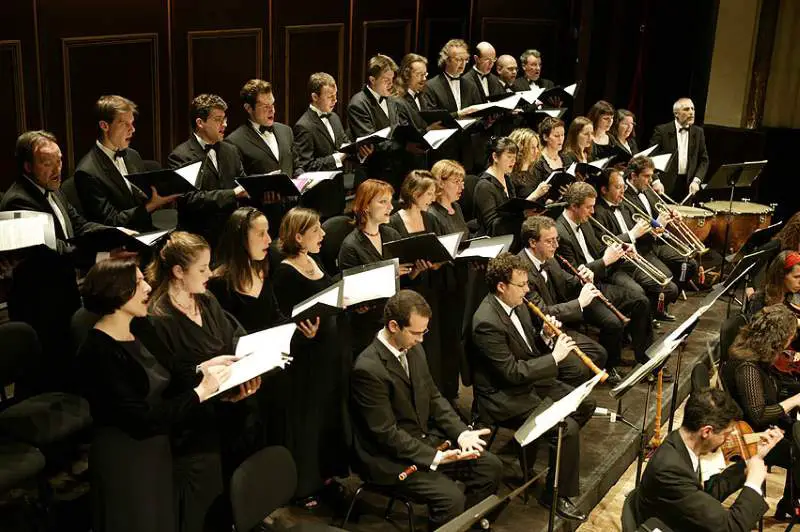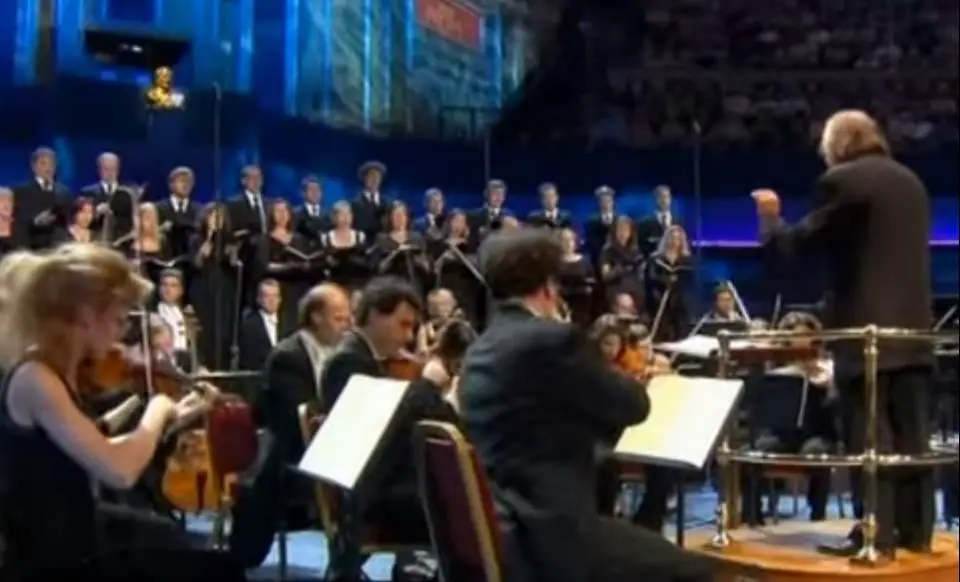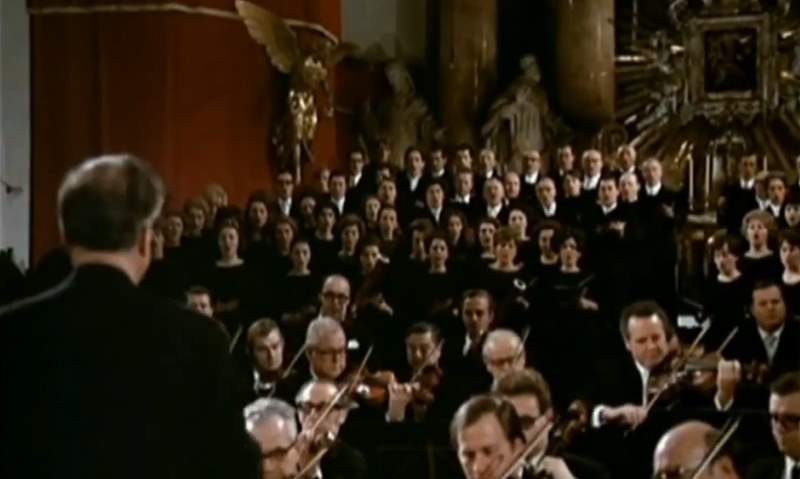Conducted by the Swiss conductor Michel Corboz, Ensemble Vocal de Lausanne (choir) and Sinfonia Varsovia (orchestra) perform Wolfgang Amadeus Mozart’s Requiem Mass in D minor (K. 626). Soloists: Charlotte Müller Perrier – soprano, Valérie Bonnard – alto, Valério Contaldo – tenor, Peter Harvey – baritone. This performance was recorded during “La folle journée” 2010, the French annual classical music festival held in Nantes, France’s largest classical music festival.
Wolfgang Amadeus Mozart’s Requiem Mass
Wolfgang Amadeus Mozart’s Requiem in D minor (K. 626) stands as one of the most profound and admired works in classical music, notable for its haunting beauty and the mystery surrounding its creation and completion. Commissioned in 1791 by Count Franz von Walsegg, who intended to present it as his own in memory of his late wife, the Requiem was one of Mozart’s final works. During its composition, Mozart was afflicted with his final illness, leading him to become consumed with the notion that he was writing it for his own funeral. His death on December 5, 1791, left the piece incomplete.
The task of completing the Requiem fell to Mozart’s students after his widow, Constanze Mozart, sought to fulfill the commission for financial reasons. Franz Xaver Süssmayr, closely involved with Mozart during the composition, is recognized for completing most of the manuscript, though other composers like Joseph Eybler also contributed.
Musically, the Requiem is renowned for its dramatic intensity and emotional depth, featuring movements such as the Introitus, Kyrie, and the famous Sequence (including Dies Irae and Lacrimosa), among others. It employs a chorus, soloists, and an orchestra, weaving together a rich and varied sonic landscape.
The Requiem’s legacy extends far beyond its musical influence, having become a cultural icon featured in various media forms. It has significantly influenced the requiem form in music and continues to be a mainstay in classical music performances worldwide. However, its authorship has been a subject of debate, with discussions centered on the extent of Mozart’s contribution versus that of his students, particularly Süssmayr, whose completion of the work has been both criticized and analyzed for its authenticity.
The Requiem was composed in Vienna in 1791 and left unfinished at Mozart’s death on December 5. A completion dated 1792 by Franz Xaver Süssmayr was delivered to Count Franz von Walsegg, who had anonymously commissioned the piece for a Requiem Mass to commemorate the February 14 anniversary of his wife’s death.
Program
- I. Introitus
- II. Kyrie
- Sequentia
- Dies irae
- Tuba mirum
- Rex tremendae
- Recordare
- Confutatis
- Lacrimosa
- IV. Offertorium
- Domine Jesu
- Hostias
- V. Sanctus
- VI. Benedictus
- VII. Agnus Dei
- VIII. Communio
Ensemble Vocal de Lausanne

L’Ensemble Vocal de Lausanne (English: Lausanne Vocal Ensemble) was founded by Michel Corboz in 1961. It is composed of a core of young professionals with who come to associate, according to interpreted work, other high-level chorus singers.
This characteristic makes it possible for the ensemble to approach a very broad repertory, covering the history of the music of the beginnings of the Baroque (Monteverdi, Carissimi…) with the 20th century (Francis Poulenc, Arthur Honegger…) and in all the formats, from a small group of 12 singers to the symphonic chorus.
Sinfonia Varsovia

The Sinfonia Varsovia is an orchestra based in Warsaw, Poland. It was founded in 1984 by Yehudi Menuhin, Waldemar Dąbrowski, and Franciszek Wybrańczyk, as a successor to the Polish Chamber Orchestra. Since 2003 the orchestra has been led by Krzysztof Penderecki as its artistic director.
Menuhin had a close relationship with the orchestra that he helped to found, conducting them in the recording of a full cycle of Schubert’s symphonies released in 1998. This followed a cycle of live performances of Beethoven’s symphonies in 1994. The cycle was recorded and commercially released. Other conductors to have worked with the orchestra include Claudio Abbado, Charles Dutoit, Valery Gergiev, and Lorin Maazel.
Sources
- Requiem (Mozart) on Wikipedia
- Ensemble Vocal de Lausanne on bach-cantatas.com
- Sinfonia Varsovia on Wikipedia

